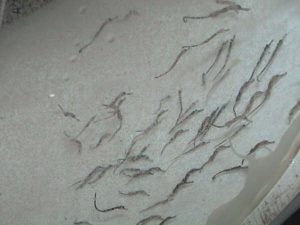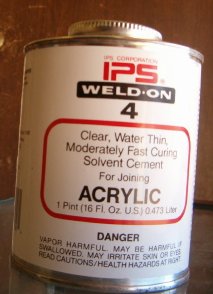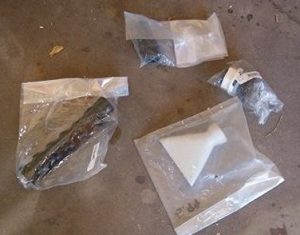 “I would love to keep some, but I don’t have any type of aquarium for them” I hear that phrase on regular basis regarding the husbandry of juvenile fish, specialty feeders, and jellyfish. While it is true that all of these animals have special needs, it doesn’t mean that they are impossible to keep. Admittedly difficult, but maybe not for long.
“I would love to keep some, but I don’t have any type of aquarium for them” I hear that phrase on regular basis regarding the husbandry of juvenile fish, specialty feeders, and jellyfish. While it is true that all of these animals have special needs, it doesn’t mean that they are impossible to keep. Admittedly difficult, but maybe not for long.
The purpose of this paper is to discuss current efforts and to propose new ideas for the culture and care of some rare and difficult animals. During the Marine Ornamentals conference held during March of 2004 a presentation by the remarkable Todd Gardner titled “A Low-Tech Approach to Jellyfish Culture” demonstrated ways that public and private aquaria can create simple jellyfish systems. In addition Gardner stated that such systems were so simple to create that even home hobbyists could create and maintain them.
The Basics
The basic ideas behind these modified aquaria are to create unique physical parameters that are better designed for specific animal needs. In particular slow moving, circular water flow, screened overflow preventing small larvae for leaving the system, inclusive biological filtration, and a lack of physical objects. These systems are often termed “Kreisels.” The physical objects can be quite disastrous to delicate animals such as jellyfish. In fact jellyfish are often kept in isocratic systems to avoid items as minute of concern as the corners of the aquarium.
In other words to goal is to create a system that will be able to house delicate animals with little effort.
Construction
Very few materials are needed for a project like this. Basically you need an aquarium, some common aquarium plumbing fittings, and some acrylic solvent/glue. The example shown here utilizes a used 20 gallon aquarium. This was selected for a couple of reasons, notably the size being recommended here as a minimum size, and also because they are common to find in the hobby. Common enough that I believe most hobbyists would need not look much further than their own storage shed or nearby garage sale to find one.
Selecting an aquarium for this type of project is an important first step. Obviously, the larger the aquarium, the better for most husbandry reasons. Additionally the final project may create an aquarium with a very limited viewing area. We’ll get to this in more depth later, but basically a 20 gallon aquarium used for this may have less viewing area than a typical 10 gallon aquarium.
The second step is to decide how this system will be filtered, and fed. The aspect of feeding is generally of little concern, but the area of filtering is indeed challenging. Some hobbyists have personal preferences for plenum systems, deep sand beds, mechanical filtration, refugia, and protein skimmers. All of these items can be used in these delicate animal display tanks. In this example a sand bed below the display tank and an overflow to a refugium are planned for use.
Here an old used 20 gallon glass aquarium is acquired. The aquarium is drilled for an overflow return system. This can be drilled on the side, back corner, or bottom of the aquarium. Second a filter screen for the drain is installed.
Now comes the tough part. A flexible piece of plastic is cut to fit into the aquarium. This plastic can often be found as a scrap from a local plastic fabrication. The type of plastic is not important, as long as it is metal free, flexible, and non toxic. Here a piece of Styrene was used. The cutting to fit may seem simple but given the lip most glass aquariums have, getting a perfect fit is often filled with trial and error. Therefore the piece shown here was trimmed and tried several times before getting the perfect fit. If you would like to skip this process then I suggest cutting a piece 11.75 inches by 37 inches as that was the final measurements of the piece seen here.
Now with the plastic in place reference marks can be made on the outside of glass. Basically marks to outline the “U” shaped area created by the plastic. While not necessary a step is shown here with acrylic braces being constructed within the tank. Alternatively a p.v.c. frame (like those used in reef tanks to support live rock) can be used.
Now it is time to create overflow holes in your flexible plastic. Unlike many reef systems, the elevation of these holes does not determine the water height of this display tank. Instead an abundance of small holes is used to prevent high velocity. Juvenile fish fry and jellyfish will be lodged into overflow/filter holes if the velocity is too high. This is why you really can’t have too many small exits. We start by marking the plastic where holes are to be drilled. In this case I simply drew a grid on the plastic, then just drilled holes at every intersection.
Now we can see how the final tank will look. The flexible plastic insert is not permanently installed, and it is not held water tight. When setting up this system the bottom portion under the flexible plastic can be of a different display area (refugium) or can simply be a water zone. That area can be visible as seen in the empty system, or can later have a cover to hide the area for aesthetic reasons.
Water return lines are also important in these systems. Slow water flow may be needed to keep animals suspended, but also slow enough to prevent collisions with one another. The inlet system should be plumbed to include either a spray bar (pipe drilled with several holes over a long area) or with a diffused fitting as shown here.
Conclusion
While juvenile fish and jellyfish systems are previously and widely known as difficult systems to maintain, aquaria for such animals and the like can be made by home hobbyists. With very little costs and even less experience, hobbyists can create systems very similar in design to those used by large public aquaria. The main concerns and the most important aspect of creating these systems are to decide how much of the system is viewable and how the filtration will take place.
Acknowledgements
First off I would like to thank Todd Gardner of Atlantis Underwater World. Todd is a wonderful addition to this hobby and his willingness and ability to bridge the gap between public aquaria and home hobbyist are impressive to say the least. Secondly I would like to thank Bob Burhans from the Birch’s Aquarium at Scripps for his insight and knowledge about seahorse husbandry. He is not only knowledgeable but eager to help those who wish to contribute to the aquaculture of these ill-omened animals. Funding for this project was provided by The Aquatic & Terrestrial Research Team, and publication and support was generously provided by The Advanced Aquarist Online Magazine.
Author Info
Adam Blundell M.S. works in Marine Ecology, and in Pathology for the University of Utah. While not in the lab he is the president of one of the Nation’s largest hobbyist clubs, the Wasatch Marine Aquarium Society (www.utahreefs.com). He is also Director of The Aquatic & Terrestrial Research Team, a group which utilizes research projects to bring together hobbyists and scientists. His vision is to see this type of collaboration lead to further advancements in aquarium husbandry. Adam has earned a BS in Marine Biology and an MS in the Natural Resource and Health fields. Adam can be found at [email protected].
References
- Burhans, R., Melechinsky, D., (2004) “Seahorse Husbandry and Propagation”, Scripps Institution of Oceanography. San Diego, CA.
- Gardner, T., (2004) “A Low-Tech Approach to Jellyfish Culture”, Presentation, Marine Ornamentals, Honolulu, HI.









0 Comments